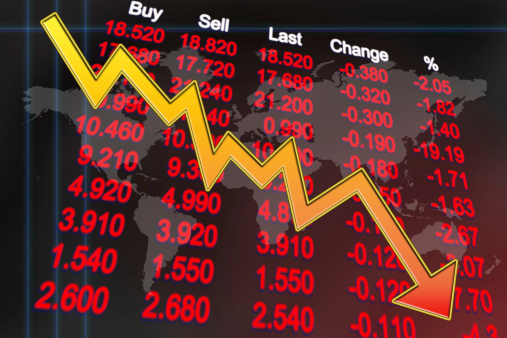Health and Healthcare
Biotech: The Poster Child for Market Volatility in 2014
Published:
When 2014 began, no one promised the stock market would rise in a nice, smooth regal sort of way.
Boy, were they right. Stocks have been subject to intense bursts of pummeling and rallying all year. And biotechnology is the poster child for this whipsawing.
The NYSE Arca Biotechnology Index fell nearly 9% between a peak on Jan. 22 and a low on Feb. 5. It jumped 23% over the next three weeks, and then gave it all back and then some through April 15. And the group was not done yet. Since April 15, the index is up 6.7%.
It gets worse if you look at the SPDR S&P Biotech ETF (NYSEMKT: XBI). The exchange traded fund fell 13% between Jan. 22 and Feb. 5 and, after a quick 24% run-up over the next three weeks, the ETF tanked, dropping 33% between Feb. 26 and April 15. Oh, and it is up about 7.8% since its April 15 bottom.
Want more proof. How about Gilead Sciences Inc. (NASDAQ: GILD). It had one slump in January and February that trimmed the shares by 6.5%. All that loss was regained in a 7.7% rally through Feb. 25. And then the bottom fell out, with the stock falling 25.2% between Feb. 25 and April 11. The stock is up 16% since. First-quarter sales of Sovaldi, its drug for hepatitis C, hit $2.3 billion.
So, why are biotechs so crazy?
Biotechs are always volatile. If a drug wins U.S. Food and Drug Administration (FDA) approval, it turns a piece of chemistry into a potential gold mine. Like Sovaldi. If the FDA does not approve the drug, the company can get wiped out.
Biotechs are the new dot-com stocks. Many biotech stocks saw huge gains in 2013 that carried over into 2014. The S&P Biotech ETF jumped 48.1% in 2014. The iShares Nasdaq Biotechnology Index Fund (NASDAQ: IBB) was up 65.5%.
They have flooded the market with initial public offerings (IPOs) this year. And the problem is with the biotech IPOs is that they involve companies have no products with revenue streams and profitability. What many companies are looking for is the cash to continue their research in hopes that the research will pay off with drugs that will win big so they can sell out to a pharmaceutical giant like Pfizer Inc. (NYSE: PFE), Eli Lilly & Co. (NYSE: LLY) or Merck & Co. Inc. (NYSE: MRK). And as we know from the dot-com bust, investors can only take so much.
Biotechs are vulnerable to bad publicity. Take Sovaldi and its fantastic sales. One reason for the performance is its cost: $1,000 for one pill and $84,000 for a typical course of treatment. Medicaid, the Veterans Administration and others are getting stressed by the expense. Members of Congress are howling. The New York Times noted that UnitedHealth Group Inc. (NYSE: UNH) said first-quarter profit declined because of the expense of Sovaldi and similar drugs.
One result: The iShares Nasdaq biotech ETF (NASDAQ: IBB) jumped as much as 21.3% this year and has given back the entire gain.
There is one more issue affecting biotechs, and that is that so much of the stock market’s moves are generated by computer algorithms.
The S&P 500 fell 6.1% between Jan. 15 and Feb. 3. After recovering all of those losses, the index suffered a 4.4% decline between April 4 and April 11. It is up 3.1% since. The Nasdaq has been more volatile, falling 6.6% in that January-February pullback and 9.7% in the more recent pullback.
It is not just biotechs weighing on the composite. It is all momentum stocks. Amazon.com Inc. (NASDAQ: AMZN) reached an all-time high of $408.06 on Jan. 22. It closed at $303.88 on Friday, down 9.9% on the day, and 25% from that January peak. Tesla Motors Inc. (NASDAQ: TSLA) has fallen nearly 25% from its intraday peak on Feb. 26.
And there is nothing to suggest there won’t be more big swings before we bid farewell to 2014.
The average American spends $17,274 on debit cards a year, and it’s a HUGE mistake. First, debit cards don’t have the same fraud protections as credit cards. Once your money is gone, it’s gone. But more importantly you can actually get something back from this spending every time you swipe.
Issuers are handing out wild bonuses right now. With some you can earn up to 5% back on every purchase. That’s like getting a 5% discount on everything you buy!
Our top pick is kind of hard to imagine. Not only does it pay up to 5% back, it also includes a $200 cash back reward in the first six months, a 0% intro APR, and…. $0 annual fee. It’s quite literally free money for any one that uses a card regularly. Click here to learn more!
Flywheel Publishing has partnered with CardRatings to provide coverage of credit card products. Flywheel Publishing and CardRatings may receive a commission from card issuers.
Thank you for reading! Have some feedback for us?
Contact the 24/7 Wall St. editorial team.